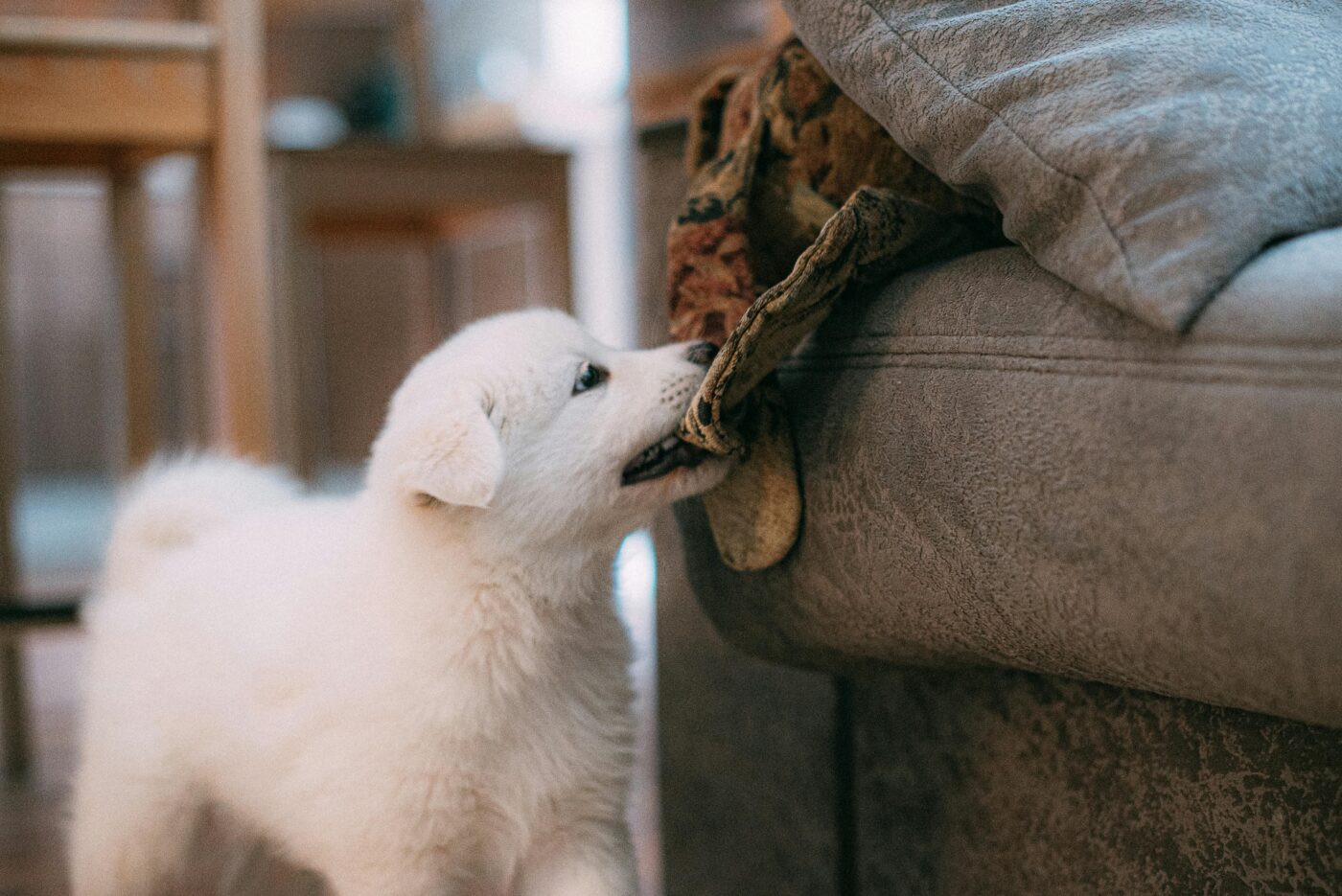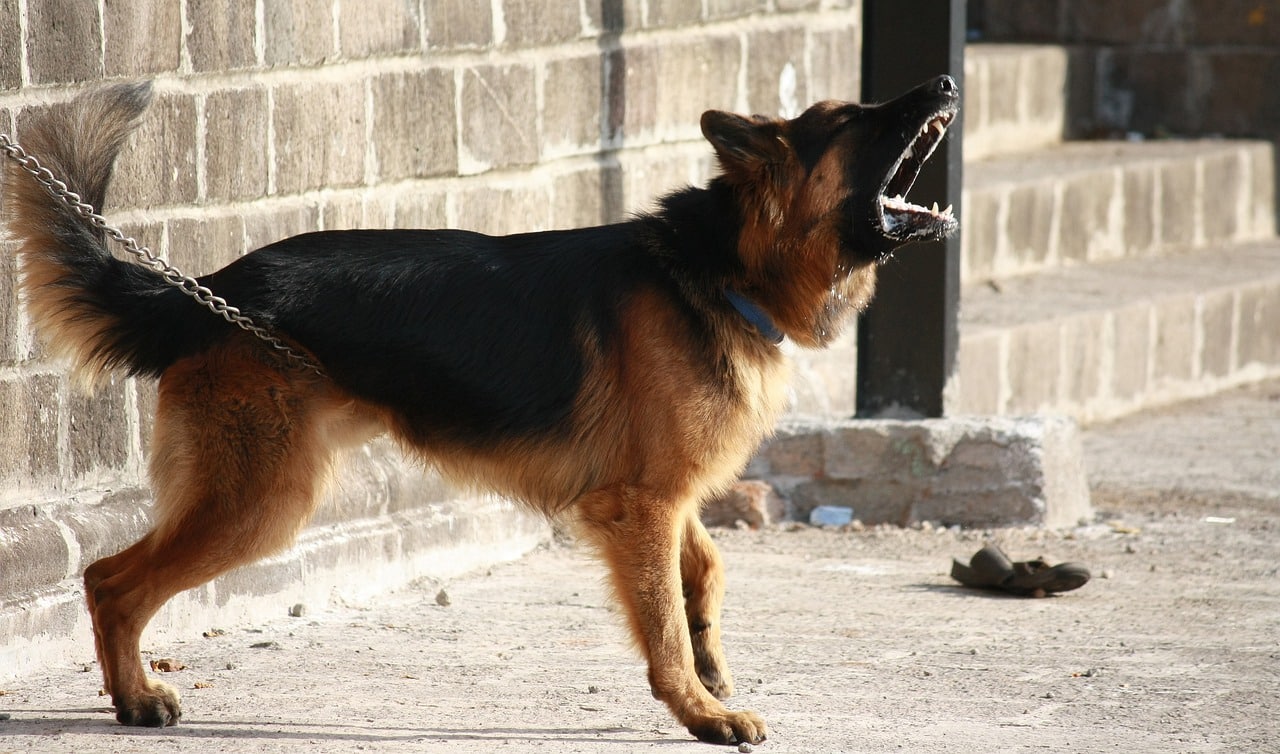 Shutterstock
Shutterstock
Dogs may not express emotions as humans do, but they have unique ways of showing when they’re upset. If your dog seems distant, avoids eye contact, or displays mild rebellious behavior, it might be their way of signaling they’re mad at you. Recognizing these signs can help you understand when your furry friend feels hurt or frustrated. Being attuned to these cues allows you to respond with the care and reassurance needed to mend any rifts and keep your bond strong.
 Shutterstock
Shutterstock
One of the most telling signs that your dog may be upset with you is a refusal to make eye contact. Dogs are naturally expressive with their eyes and often use eye contact to bond with their owners. When a dog feels hurt or upset, they may avoid looking directly at you, choosing instead to look away or stare at something else. This can be especially apparent if they usually seek eye contact regularly. To remedy this, approach your dog calmly and avoid forcing eye contact; instead, allow them to come to you when they feel ready, and offer gentle encouragement through treats or affection.
Turning Their Back on You
 Shutterstock
Shutterstock
Dogs often communicate through body language, and turning their back on you is a clear signal that they might be upset. By physically facing away, dogs indicate that they feel disappointed or distanced from you. It’s a subtle form of non-verbal protest, showing that they’re withholding their usual attention or affection. If your dog turns their back on you, it’s best to give them some space. Allow them to come to you when they’re ready, and use positive reinforcement, such as petting and soft words, to rebuild trust and make them feel reassured.
Ignoring Commands
 Shutterstock
Shutterstock
If your dog suddenly stops responding to commands they know well, it could be a sign that they’re feeling frustrated or mad at you. Ignoring commands can be a way for dogs to assert independence or to communicate that they’re unhappy. This type of “rebellion” is usually mild and doesn’t last long if addressed promptly. To fix this, try reinforcing commands with positive rewards like treats or playtime, showing your dog that following directions brings positive outcomes. Be patient, as pushing too hard can backfire, making them feel more resistant.
Hiding or Avoiding You
 Shutterstock
Shutterstock
When dogs feel upset, they may retreat to a safe space, such as a crate or under furniture, as a way to avoid interaction. If your dog hides or tries to avoid you when you approach, it’s a sign that they might be feeling hurt or annoyed. This behavior often occurs after an event that may have caused them distress, like a loud scolding or an accidental injury. Give them space and time to feel comfortable again. Approach them slowly with treats or gentle petting to reassure them that they’re safe and loved.
Excessive Paw Licking
 Shutterstock
Shutterstock
Paw licking is often a coping mechanism for dogs, especially when they’re feeling stressed, anxious, or upset. While occasional paw licking is normal, excessive licking may indicate that your dog is feeling uncomfortable or even angry. This behavior helps dogs self-soothe, similar to how humans might fidget when nervous. If your dog seems to be licking excessively, try to identify any recent events that may have triggered this response, and offer comforting interactions, such as gentle petting or calming treats, to help them relax and feel at ease.
Acting Destructive
 Shutterstock
Shutterstock
Dogs sometimes display destructive behavior, like chewing on furniture or tearing up pillows, when they’re feeling frustrated or upset. If your dog normally doesn’t engage in destructive behavior but suddenly starts acting out, it may be a sign that they’re upset with you or feeling neglected. Dogs use this behavior as a way to relieve pent-up emotions or to get attention. To address this, increase your interaction time with your dog, providing extra playtime and attention. Offering appropriate chew toys and reinforcing good behavior with praise can also redirect their frustration in a positive way.
Refusing Food or Treats
 Shutterstock
Shutterstock
If your dog typically loves food but suddenly starts refusing meals or treats, it could be a sign that they’re upset or feeling down. Dogs are usually enthusiastic about their favorite snacks, so a loss of interest in food often indicates something isn’t right. This behavior can be a sign of emotional distress or even resentment. To encourage them to eat, try offering their favorite treats in a calm, gentle manner. Reassure them with positive interactions, and ensure there’s no added stress in their environment that might be affecting their appetite.
Persistent Barking or Whining
 Shutterstock
Shutterstock
Dogs use barking and whining as a form of communication, and persistent vocalizations can signal that they’re upset. When a dog is mad or frustrated, they might bark or whine excessively as a way of expressing their discontent. This behavior may escalate if they’re not receiving the attention or comfort they seek. To address this, try speaking to your dog in a calm, reassuring voice. Offering physical affection or engaging in playtime can also help redirect their focus and reduce the need for excessive vocal expressions.
Displaying the “Side-Eye” or Whale Eye
 Shutterstock
Shutterstock
Dogs sometimes show what’s called the “whale eye”—where they turn their head away but keep their eyes fixed on you, showing the whites of their eyes. This look often signifies discomfort, irritation, or even anger. The “side-eye” can be a subtle way for dogs to indicate that they’re feeling uneasy or wary around you. If you notice this look, give your dog some space and avoid making sudden movements. Offering treats or using a calm, soothing tone can help reassure your dog that they’re safe and encourage them to relax.
Sleeping Away from You
 Shutterstock
Shutterstock
If your dog usually enjoys sleeping near you but starts choosing other spots, it might be their way of showing that they’re upset. Dogs are social animals and often sleep close to their humans as a sign of trust and affection. When they start sleeping elsewhere, it may be an indicator of emotional distance. To mend this, try inviting them back to their usual sleeping spot with a cozy blanket or treat. Respect their space if they’re not ready, but offer gentle encouragement to help restore that sense of closeness and trust.
Pacing or Restlessness
 Shutterstock
Shutterstock
Pacing or acting restless is often a sign that your dog is feeling anxious or agitated. When dogs are mad or unsettled, they may pace as a way to release their nervous energy. This can be particularly noticeable after a change in routine or a situation that caused them distress. If your dog is pacing, try to identify any recent changes that might be causing their discomfort, and use a calm voice to reassure them. Walking them outside or providing some gentle playtime can also help alleviate their restlessness.
Sitting with Their Back to You
 Shutterstock
Shutterstock
If your dog deliberately sits with their back to you, it might be a clear sign they’re feeling upset or disappointed. This action is often a passive way for dogs to communicate that they’re hurt or unhappy with something you did. By turning away, they’re withholding their attention, letting you know they’re not pleased. To mend this, gently approach and offer pets or treats, showing them that you’re ready to make amends. Over time, positive interactions will help rebuild trust and restore your bond.
From “Grrr” to “Good Dog!”
 Shutterstock
Shutterstock
When your dog’s behavior shifts from friendly to frustrated, it signals that something may need attention. Addressing their emotions with empathy and care can help restore the bond you share. Dogs rely on us for companionship and understanding, so taking steps to mend any rifts strengthens your connection. By acknowledging their feelings and responding with patience, you’ll turn signs of frustration into tail wags and trusting eyes. Every “ruff” moment is a chance to deepen the connection with your furry friend and show them they’re loved.
